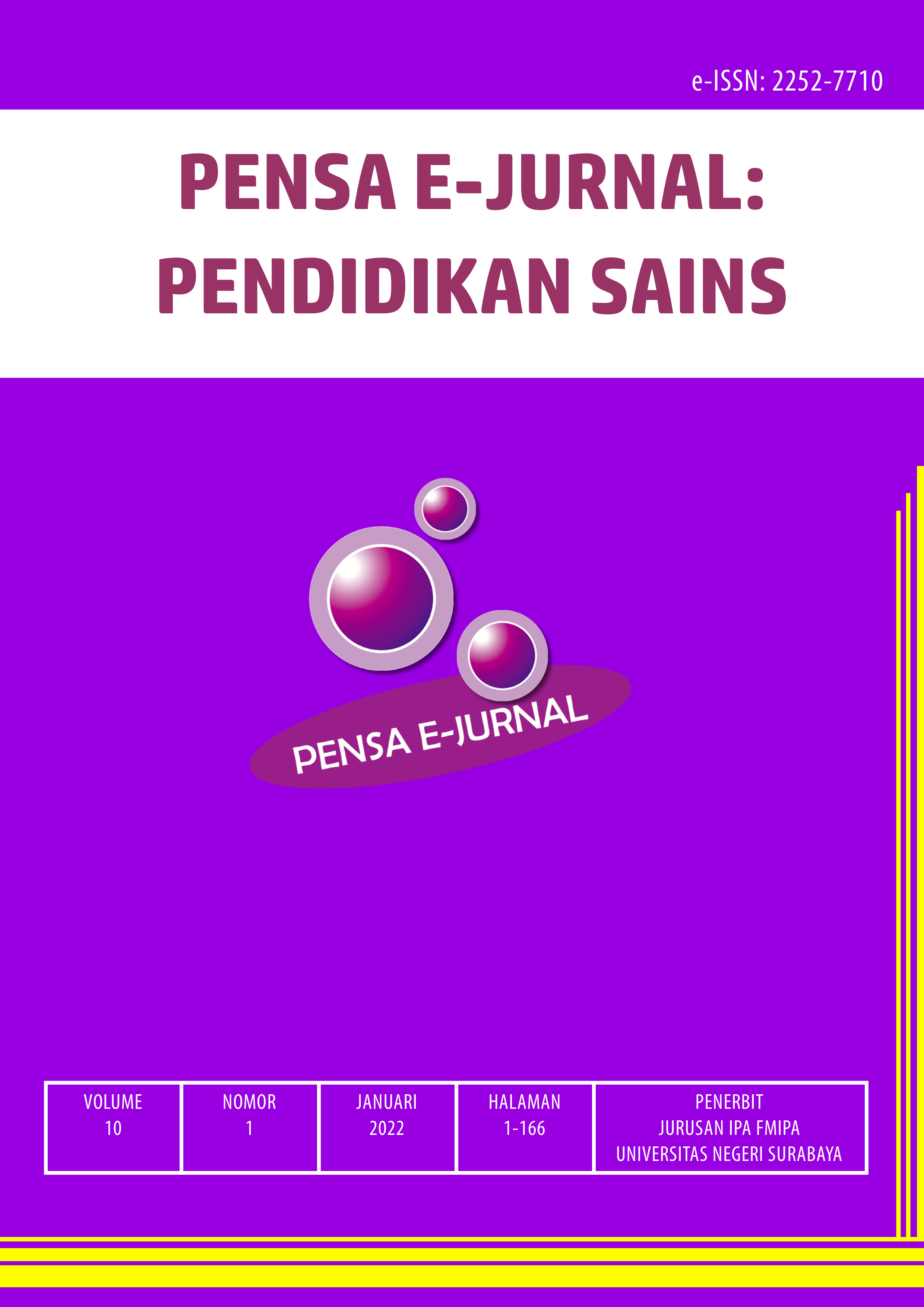PENINGKATAN MOTIVASI BELAJAR IPA MELALUI MODEL PEMBELAJARAN SOMATIC AUDITORY VISUAL INTELLECTUAL PADA PEMBELAJARAN DARING
DOI:
https://doi.org/10.26740/pensa.v10i1.42021Keywords:
learning motivation, SAVI learning modelDownloads
Download data is not yet available.
Downloads
Published
2022-01-09
How to Cite
Jati, H. M., Budiyanto, M., & Susiyawati, E. (2022). PENINGKATAN MOTIVASI BELAJAR IPA MELALUI MODEL PEMBELAJARAN SOMATIC AUDITORY VISUAL INTELLECTUAL PADA PEMBELAJARAN DARING. PENSA E-JURNAL: PENDIDIKAN SAINS, 10(1), 60–68. https://doi.org/10.26740/pensa.v10i1.42021
Issue
Section
Articles
 Abstract views: 570
,
Abstract views: 570
, PDF Downloads: 1058
PDF Downloads: 1058

















